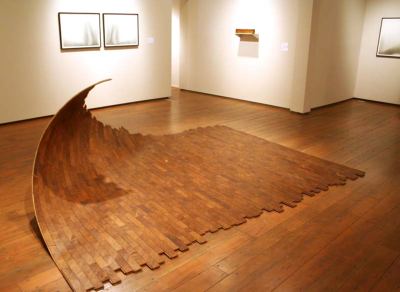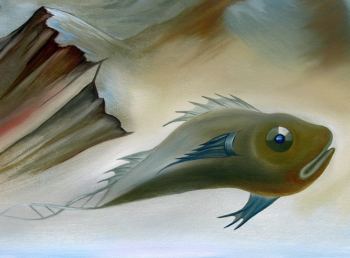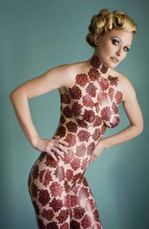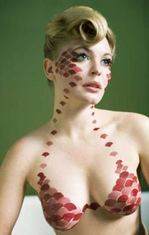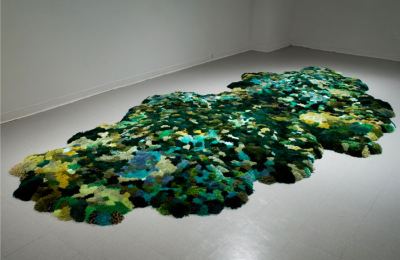
Archives for July 2009
Richard Renaldi – things fall apart
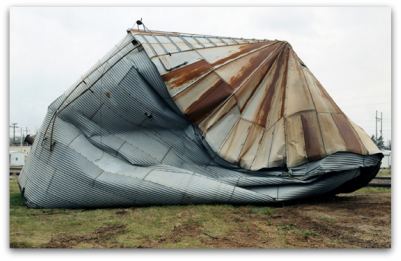 Why is this image smoking, while countless others featuring falling down barns are born stone cold dead? Renaldi’s absence of nostalgia. His image is a clean hit.
Why is this image smoking, while countless others featuring falling down barns are born stone cold dead? Renaldi’s absence of nostalgia. His image is a clean hit.
The title of this post comes from the 20th-century’s most influential poem, Yeats’ The Second Coming:
TURNING and turning in the widening gyre
The falcon cannot hear the falconer;
Things fall apart; the centre cannot hold;
Mere anarchy is loosed upon the world,
The blood-dimmed tide is loosed, and everywhere
The ceremony of innocence is drowned;
The best lack all conviction, while the worst
Are full of passionate intensity.Surely some revelation is at hand;
Surely the Second Coming is at hand.
The Second Coming! Hardly are those words out
When a vast image out of Spiritus Mundi
Troubles my sight: somewhere in sands of the desert
A shape with lion body and the head of a man,
A gaze blank and pitiless as the sun,
Is moving its slow thighs, while all about it
Reel shadows of the indignant desert birds.
The darkness drops again; but now I know
That twenty centuries of stony sleep
Were vexed to nightmare by a rocking cradle,
And what rough beast, its hour come round at last,
Slouches towards Bethlehem to be born?
Sherman Alexie’s Web site is titled, Falls Apart. Joan Didion’s breakthrough essay collection? Slouching Toward Bethlehem. And
Chinua Achebe’s best novel, the African version of King Lear? Things Fall Apart. The first 8 years of the 21st century suggested an answer to the poem’s last line. What beast slouches toward Bethlehem? We do.
Mark Handforth – church is where you find it
My ride is the kingdom of God. Via

Troy Gua: Do You See Me?
On the Internet, nobody knows you’re a dog, but if you bark, beg, drool and growl, people figure it out. Once acquired, can that identity be shed?
Troy Gua is interested in character that can assumed, rejected, fictionalized, asserted and deleted online on social networks, blogs, fan sites and chat rooms. What part can be claimed as easily as picking somebody else’s coat from a cloakroom, and what is hardwired as a fingerprint?
He’s at Vermillion through Aug. 7.
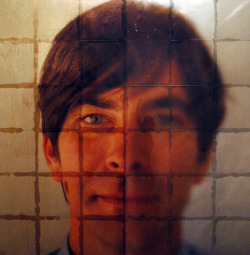

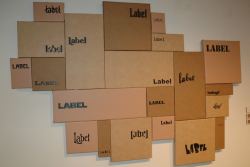
Alice Wheeler – Women Are Beautiful
As a tribute to Garry Winogrand’s 1981 series, Women Are Beautiful, Alice Wheeler created her own collection of beautiful women. Her exhibit at Greg Kucera is the first foray for the series, which is ongoing.
Unlike Winogrand, Wheeler is not looking at the other. Plus, her definition
of the beautiful is far more generous than Winogrand’s. He focused on
the affluent, urban young. She includes the rural, the old, the flaky
and defiant, as well as those Winogrand would agree are lovely by
anyone’s measure.
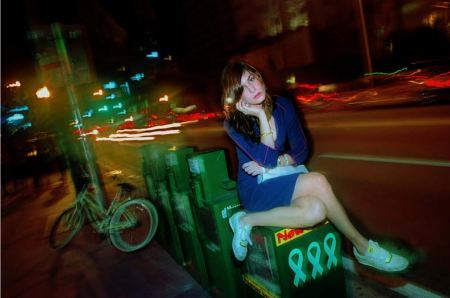 The Winogrand-Wheeler connection is the sweep of a moment in motion, a fragment from life’s random stream that speaks volumes about the whole.
The Winogrand-Wheeler connection is the sweep of a moment in motion, a fragment from life’s random stream that speaks volumes about the whole.
Women own their space in Wheeler’s work. Even when they are clearly being steered by a man through a scene not their own, their contact with Wheeler is electric.
 Nan Goldin comes to mind, for good reason. Almost everybody working on the fierce end of the sexual vibe owes her, but if Goldin’s and Wheeler’s prints were in the same show, the differences would be apparent.
Nan Goldin comes to mind, for good reason. Almost everybody working on the fierce end of the sexual vibe owes her, but if Goldin’s and Wheeler’s prints were in the same show, the differences would be apparent.
Wheeler is heads-up play. There’s an upbeat, irrepressible refusal to judge in her work, a determination not to call anybody a freak, unless as a compliment, and an inability to accept a depressing scene as a downer. She’s the kind of person who’d read The Metamorphosis and think it’s a comedy.
In the photo above, PREGNANT WOMAN AT EVIL KNIEVEL DAYS, BUTTE, MT (2007), the man on the right looks as if he slipped out of a Matthias Grunewald to join the festivities. In Wheeler’s hands, he’s no longer an outsider. In her work, all the outs are in free.


Brian Sims – on the outside looking outside
Sims:
As a Post-Modern Surrealist my desire is not to be mainstream;
Instead, I want to be upstream, and continue going up until I evaporate.
I’ve heard of art being a kind of geological strata, with the famous anchoring the face of a wide seam until the earth rolls again, but not of artists as salmon, swimming up their own streams to leave what they have to give and then die.
In this context, the utter out-of-it of Sims’ (aka BRIMS’) choice (to be an echo), appears inevitable, a biological imperative to be true to his own extinct school.
This is a salute to the artists who are commonly thought to be going nowhere, who don’t rise to the level of being thought about but persist all their lives, leaving canvases rolled behind couches and installations in the attic. If anything they make happens to survive, who’s to say someone in the future won’t be thrilled to see it?
Ariana Page Russell – wearing nothing but her art
What Nick Cave does with sound suits, Ariana Page Russell does with her skin. Both suits and skin are a means of a expressing a flamboyant relationship to the body. (Click to enlarge.) Says Russell:
The power of a blush, an ephemeral and
uncontrollable response revealing internal sentiment, becomes the
fashion of skin. I have sensitive skin that easily flushes. In Dressing,
I use the imagery of this temporary change as my medium via collages
made from photographs of my skin. These collages show shades of
sensitivity in reds and pinks made into patterns, then scanned and
printed as temporary tattoos.I place the skin tattoos back on skin,
adorning myself with a longer lasting, intentional blush. Rather than
being frustrated by my skin’s transparency, I claim it by dressing
up in the crimson hues that reveal my vulnerability.
Vulnerability is not the word I’d chose. She turns the meaning of a blush inside out, into a celebratory song of self. She’s at Platform Gallery through July 3.
Jessie Henson: text with the homey touch
Rest your weary head on this:
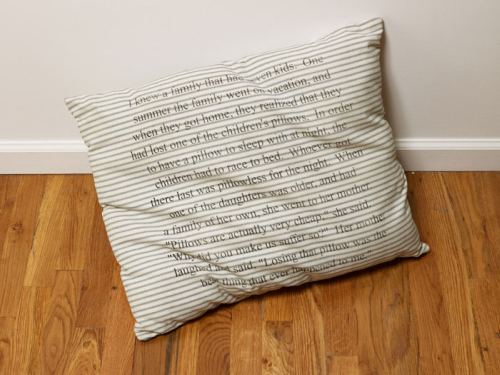
Text stands alone: its ubiquitous presence in contemporary art
What a dead fish or a bowl of flowers was in 17th-century Holland, text is to us. Art with writing in it is ages old: God’s word written in the air or the king’s codes on banners unfurled over a battle scene. Becoming a dominant thread in the late 1960s, however, is the idea that text stands alone.
Lawrence Weiner and Joseph Kosuth, key figures in the text take-over, are in Target Practice: Painting Under Attack, 1949-78 at the Seattle Art Museum. (Review here.)
Lawrence Weiner, An Amount of Paint Poured Directly Upon the Floor and Allowed to Dry, 1968
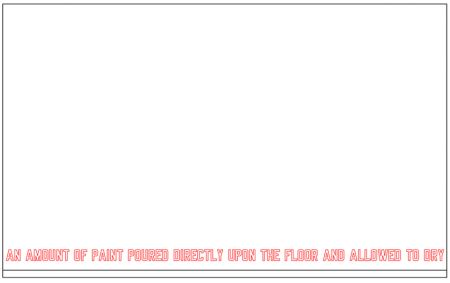 Joseph Kosuth Title (Art As Idea As Idea) 1968
Joseph Kosuth Title (Art As Idea As Idea) 1968
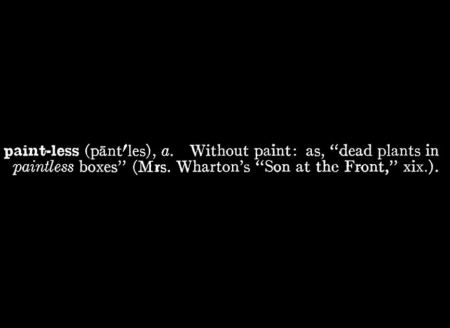 In Seattle, Alex Schweder‘s tribute to Lawrence Weiner is titled Painting Instructions from 2007.
In Seattle, Alex Schweder‘s tribute to Lawrence Weiner is titled Painting Instructions from 2007.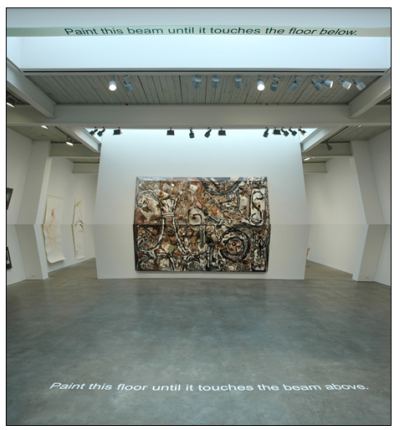 Speaking of tributes, Stand Up Comedy from Portland has a wall of epigrams from Ed Ruscha,169 Bits (installation), all printed in a lovely wave of mechanical calligraphy, $20 a pop at Howard House, as befits the current economy.
Speaking of tributes, Stand Up Comedy from Portland has a wall of epigrams from Ed Ruscha,169 Bits (installation), all printed in a lovely wave of mechanical calligraphy, $20 a pop at Howard House, as befits the current economy.
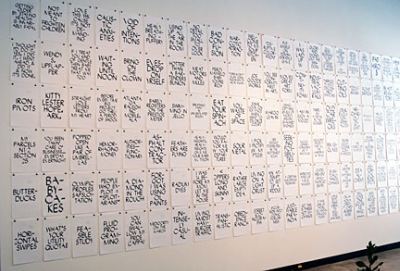 The text piece I admire most in Seattle is Mark Mumford‘s Hold Still from 2003, ink on paper.
The text piece I admire most in Seattle is Mark Mumford‘s Hold Still from 2003, ink on paper.
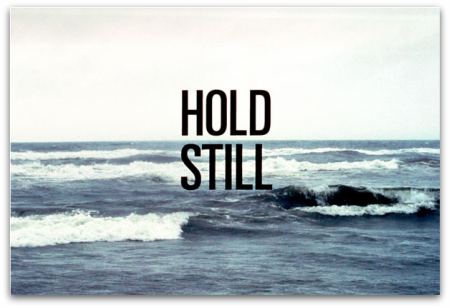 Believe me, I’m trying.
Believe me, I’m trying.
Onward from Lynda Benglis: what is poured, puffed and curled on the floor
Carl Andre’s floor pieces from the late 1960s are direct. Flat squares are in contact with flat ground. The way they appear to occupy the space above them is pure magic.
Lynda Benglis’ are instead a kind of intrusion. They creep over, puddle and change the character of the floor, depriving it of its function as a common base for all.
Benglis: Baby Planet 1969
Poured pigmented latex 106 x 24 x 1 1/2in. (269.2 x 61 x 3.8cm) Cheim & Read. Baby Planet is in Michael Darling’s Target Practice: Painting Under Attack 1949-78 at the Seattle Art Museum. (Review here.)
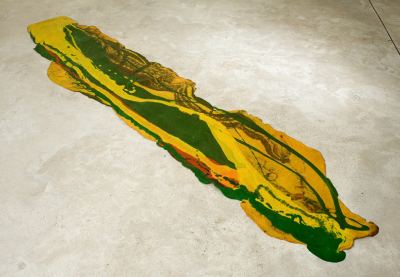 Between Andre and Benglis, her floor work is (at present) the most influential. That wheel will turn, but right now, take a bow, Ms. Benglis.
Between Andre and Benglis, her floor work is (at present) the most influential. That wheel will turn, but right now, take a bow, Ms. Benglis.
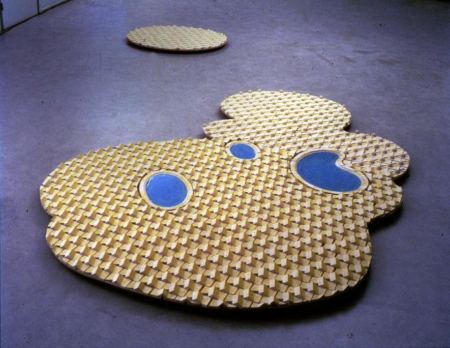 Brent Sommerhauser, now on view at the Greg Kucera Gallery, finds fertile ground between Andre and Benglis. He choses neither, evokes both and cuts the curl of his own wave.
Brent Sommerhauser, now on view at the Greg Kucera Gallery, finds fertile ground between Andre and Benglis. He choses neither, evokes both and cuts the curl of his own wave.
